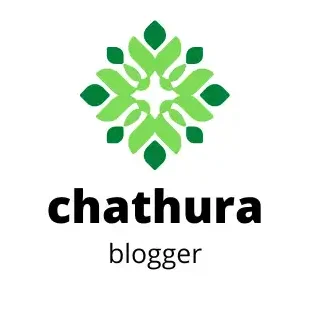What are the Disadvantages of Google Ads?
In today’s fast-paced digital landscape, businesses are constantly seeking innovative ways to reach their target audience.
Among the myriad of advertising options available, digital advertising has emerged as a cornerstone for business growth and brand visibility.
Whether you’re a small business owner or part of a multinational corporation, the ability to connect with potential customers online is not just an advantage—it’s a necessity.
At the forefront of digital advertising stands Google Ads, a platform synonymous with paid search marketing.
Google Ads allows businesses to showcase their products and services to users actively searching for them.
With its unparalleled reach and precision targeting, it’s no surprise that Google Ads has become a go-to choice for many marketers.
From crafting highly specific campaigns to utilizing its vast network, the platform offers tools designed to maximize ad performance and ROI.
However, like any tool, Google Ads isn’t perfect. Despite its advantages, there are notable downsides that can impact advertisers’ budgets, strategies, and overall outcomes.
This article dives deep into the disadvantages of Google Ads, aiming to provide a balanced and transparent view.
Whether you’re considering Google Ads for your business or seeking to refine your existing campaigns, understanding its limitations is essential for making informed decisions.
By the end of this guide, you’ll have a clear picture of both the challenges and strategies to overcome them, helping you determine whether Google Ads aligns with your goals and resources.
Understanding Google Ads
When we talk about online advertising, Google Ads is often the first platform that comes to mind.
As one of the most widely used tools for digital marketing, it’s a cornerstone for businesses aiming to increase their online visibility.
But what exactly is Google Ads, and why has it gained such prominence?
What is Google Ads?
Google Ads, formerly known as Google AdWords, is an online advertising platform developed by Google.
It allows businesses to create and run ads across Google’s search engine and its vast display network, including YouTube and partner websites.
With Google Ads, advertisers can target specific keywords, locations, devices, and even audience behaviors to ensure their message reaches the right people at the right time.
Essentially, when you use Google Ads, you’re paying to appear at the top of search engine results pages (SERPs) or on other platforms where potential customers are likely to see your ad.
Whether you’re a local shop trying to attract nearby customers or a global e-commerce brand seeking to boost sales, Google Ads offers tools to tailor your campaigns for maximum impact.
How Does Google Ads Work?
The platform operates on a pay-per-click (PPC) model, where advertisers bid on keywords relevant to their business.
When users search for those keywords, Google’s algorithm determines which ads to show based on factors like bid amount, ad relevance, and quality score.
For example, if you’re a bakery bidding on the keyword “fresh bread near me,” your ad might appear when someone searches for that phrase.
If the user clicks on your ad, you pay a fee—hence the term “pay-per-click.”
Beyond search ads, Google Ads also offers display ads, video ads, shopping ads, and app promotions.
Each format is designed to cater to different marketing goals, whether it’s driving traffic, generating leads, or increasing brand awareness.
Benefits of Using Google Ads
Before diving into the drawbacks, it’s essential to acknowledge why so many businesses rely on Google Ads.
Let’s look at the benefits of google ads,
Unparalleled Reach
With billions of searches conducted on Google daily, your ad has the potential to reach a massive audience.
This makes Google Ads one of the most powerful tools for generating traffic.
Precise Targeting
Google Ads allows advertisers to narrow down their audience using parameters like demographics, location, interests, and even the time of day.
This ensures your ads are seen by people most likely to engage with your business.
Measurable Results
Unlike traditional advertising methods, Google Ads provides detailed analytics.
You can track clicks, impressions, conversions, and ROI in real-time, enabling data-driven decision-making.
Flexibility in Budgeting
Whether you’re a small business with a tight budget or a corporation with significant marketing spend, Google Ads lets you control your daily budget and bids, making it accessible to businesses of all sizes.
Quick Results
Unlike SEO, which can take months to show results, Google Ads can generate traffic almost immediately after your campaign goes live.
This makes it an ideal choice for businesses looking for instant visibility.
By understanding the fundamentals and advantages of Google Ads, we can better evaluate its disadvantages and whether it’s the right fit for your marketing strategy.
Major Disadvantages of Google Ads
While Google Ads offers powerful tools for businesses to grow, it’s not without its challenges.
Understanding the platform’s drawbacks can help advertisers avoid costly mistakes and make more informed decisions about their marketing strategies.
Below are some of the most significant disadvantages of using Google Ads, broken down into key areas.
High Costs and Competition
One of the most noticeable drawbacks of Google Ads is the cost involved, especially for small businesses operating in highly competitive industries.
What is CPC (Cost-Per-Click) Pricing
Google Ads operates on a pay-per-click (PPC) model, meaning advertisers pay each time a user clicks on their ad.
The price of a click—known as the Cost-Per-Click (CPC)—varies based on factors like keyword demand and competition.
For high-demand keywords, CPCs can be exorbitantly high.
How Competitive Industries Drive Up Costs
Industries like legal services, finance, and healthcare often have intense competition, leading to CPCs that can exceed $50 per click.
For small businesses, this creates a barrier to entry, as they may struggle to compete with larger companies that have more substantial budgets.
Budget Challenges for Small Businesses
Small businesses frequently find themselves in a difficult position: either allocate a large portion of their budget to Google Ads or risk losing visibility.
Unfortunately, without careful planning, overspending on campaigns can quickly exhaust resources without yielding a sufficient return.
Steep Learning Curve
Google Ads is not as straightforward as it seems, and many first-time users underestimate its complexity.
Complexity of Campaign Setup and Optimization
Setting up a successful campaign involves more than just choosing keywords.
Advertisers must understand bidding strategies, audience segmentation, and ad placements.
This can feel overwhelming, especially for beginners.
Need for Expertise in Keyword Research, Ad Copy, and Bidding Strategies
Success on the platform demands expertise in areas like keyword research, writing compelling ad copy, and adjusting bids dynamically.
Without this knowledge, businesses risk poor performance and wasted spend.
Mistakes That Can Lead to Wasted Spend
Common errors, such as targeting the wrong audience, setting improper bids, or neglecting negative keywords, can result in wasted clicks that don’t convert into sales or leads.
Click Fraud Risks
Click fraud is another concern that affects the overall ROI of Google Ads campaigns.
Click Fraud and Its Impact
Click fraud occurs when bots or competitors intentionally click on ads without any intention of making a purchase. This leads to unnecessary costs and skews performance metrics.
Common Sources of Invalid Clicks
Sources of click fraud include automated bots, competitors attempting to drain ad budgets, and even unethical practices by some publishers in the Google Display Network.
Measures to Prevent Click Fraud
Advertisers can monitor their campaigns for suspicious activity, such as multiple clicks from the same IP address, and use Google’s Click Fraud Detection System.
Third-party tools can also help detect and block invalid clicks.
Dependency on Continual Investment
Unlike organic SEO, which can provide long-term results, Google Ads requires ongoing financial investment.
No Investment = No Visibility
If you stop running ads, your visibility disappears instantly. This reliance on continual spending can be a significant drawback for businesses with limited budgets or those seeking sustainable growth.
Unsustainable for Long-Term Growth
While Google Ads can drive immediate traffic, it doesn’t contribute to long-term visibility like content marketing or SEO.
This dependency can make it challenging to scale campaigns cost-effectively.
Ad Fatigue and Blindness
Over time, ads can lose their effectiveness due to ad fatigue and ad blindness.
Users Ignoring Ads After Repeated Exposure
When users see the same ad repeatedly, they may begin to ignore it, reducing its impact. This is known as ad fatigue, and it can lead to declining engagement rates.
Lower CTRs Over Time
As users become accustomed to seeing ads in search results or on websites, Click-Through Rates (CTR) can drop, forcing advertisers to refresh their creative frequently to maintain performance.
Limited Creative Space
Google Ads has strict limitations on ad formats, which can stifle creativity.
Restrictions on Ad Copy Length
Ads in Google’s search network have character limits for headlines and descriptions.
While this ensures concise messaging, it can be challenging to convey unique value propositions effectively.
Challenges in Standing Out From Competitors
In a crowded marketplace, using similar formats and keywords as competitors can make it difficult to differentiate your business.
Regulations and Policy Restrictions
Google has strict advertising policies that can pose challenges for certain industries.
Examples of Strict Google Ads Policies
Some policies prohibit the promotion of sensitive products like alcohol, tobacco, and certain healthcare items. Violations can lead to ad disapproval or account suspension.
Industries or Products That Are Banned or Heavily Restricted
Advertisers in industries like cryptocurrency, gambling, and pharmaceuticals face stringent restrictions, limiting their ability to run campaigns freely.
While Google Ads offers unmatched reach and targeting capabilities, these disadvantages highlight why it may not be the perfect solution for every business.
By understanding these challenges, you can make more informed decisions and optimize your strategy for better results.
When Google Ads Might Not Be the Best Option
While Google Ads is a leading platform for online advertising, it’s not always the best fit for every business or situation.
Factors like budget constraints, the nature of your audience, and long-term goals can make other strategies more effective.
Below are some scenarios where Google Ads might not be ideal, along with alternative approaches to consider.
Scenarios Where Google Ads Is Not Ideal
Limited Budget
If your advertising budget is minimal, running Google Ads can be risky.
The platform often demands a significant investment, especially in competitive industries, and without proper optimization, costs can outweigh returns.
In such cases, businesses may struggle to generate a positive ROI.
Niche or Local Audiences
If your target audience is highly niche or localized, Google Ads might not be the most efficient channel.
Smaller, highly specialized markets often respond better to more personalized outreach methods, such as local partnerships or direct marketing efforts.
Low Brand Awareness
Businesses with little brand recognition may find that users are less likely to click on their ads compared to competitors.
This can lead to high click costs with minimal conversions. Building a foundational level of awareness through organic or social strategies may be more effective before investing in ads.
Long-Term Growth Focus
For businesses prioritizing long-term visibility and sustainability, the immediate nature of Google Ads can be a drawback.
Since visibility disappears as soon as the budget stops, relying solely on paid ads can limit future growth.
Industries Restricted by Google Policies
If your business operates in a field that faces strict Google Ads policies—such as cryptocurrency, CBD products, or certain healthcare items—you may find the platform challenging or even inaccessible.
Alternatives to Google Ads
Search Engine Optimization (SEO)
SEO focuses on improving your website’s visibility in organic search results.
While it takes time to see results, it offers a cost-effective and sustainable approach to driving traffic.
Key benefits include:
- Building authority in your industry.
- Capturing clicks without direct ad spend.
- Long-lasting impact even after initial efforts.
A small business that sells handmade crafts can rank for keywords like “unique handmade gifts” by creating informative and engaging blog posts.
Social Media Ads
Platforms like Facebook, Instagram, and TikTok offer targeted ad solutions that may be more suitable for visually-driven or highly engaging products and services.
- Advantages: Lower CPC compared to Google Ads, advanced audience targeting, and strong engagement potential.
- Ideal for: E-commerce businesses, local services, and lifestyle brands.
A bakery promoting custom cakes could use Instagram ads with appealing visuals and customer testimonials to attract local orders.
Content Marketing
Creating valuable content—like blogs, videos, or infographics—can drive traffic and build trust with your audience.
Content marketing works well for establishing long-term relationships and showcasing expertise.
- Use cases: Educating customers about your product or service, sharing industry insights, or solving customer pain points.
- Platforms: Blogs, YouTube, LinkedIn, or even newsletters.
A fitness coach could start a YouTube channel offering free workout tutorials and monetize through upselling personalized coaching sessions.
Local SEO and Community Engagement
For businesses serving local audiences, improving your Google My Business listing, encouraging reviews, and engaging in community events can yield significant returns.
- Benefits: Free or low-cost visibility and a stronger connection with the local community.
A local hair salon can optimize its Google My Business profile with updated photos, services, and customer reviews to attract nearby clients searching for haircare services.
Email Marketing
Email remains one of the most cost-effective channels for maintaining customer relationships.
- Best for: Businesses with an established audience or customer base.
- Strategies: Share newsletters, promotions, or personalized recommendations to keep your audience engaged.
While Google Ads can be an effective marketing tool, it’s not the best solution for every business or scenario.
By understanding when and why alternatives like SEO, social media advertising, or content marketing may be better suited, businesses can allocate their resources more strategically and achieve sustainable growth.
The key is to match your marketing strategy to your unique goals and audience.
Tips to Overcome Google Ads Challenges
While Google Ads has its share of challenges, many of them can be managed with the right strategies, tools, and mindset.
Here’s how you can tackle common obstacles and make the most of your advertising budget.
Optimize Campaigns for Cost-Efficiency
Google Ads can become expensive, especially in competitive industries, but strategic optimizations can help control costs and maximize returns:
Focus on High-Intent Keywords
Target keywords that indicate a strong intent to buy or take action.
For instance, instead of broad terms like “shoes,” aim for “buy running shoes online” or “best running shoes for women.”
High-intent keywords often lead to better conversion rates, ensuring you get more value for your spend.
Leverage Negative Keywords
Negative keywords prevent your ads from showing up in irrelevant searches. For example, if you sell premium services, adding “free” as a negative keyword ensures your ad won’t appear for people searching for free solutions.
Use Bid Strategies Wisely
Automated bid strategies, such as Target CPA (Cost Per Acquisition) or Maximize Conversions, can help manage bids based on your campaign goals.
Monitor performance regularly and switch strategies as needed to optimize spending.
Set Geographical and Time Restrictions
Run your ads in locations where your target audience is most likely to convert. Similarly, schedule ads during peak times when your audience is most active to avoid wasting your budget.
A/B Test Ad Elements
Experiment with different headlines, descriptions, and calls-to-action (CTAs) to see what resonates most with your audience.
Continuously refine your ads to improve click-through and conversion rates.
Tools and Resources to Simplify Google Ads Management
Managing Google Ads campaigns can feel overwhelming, especially for beginners.
However, several tools and resources can simplify the process:
Google Ads Editor
This free desktop application lets you make bulk edits, manage multiple campaigns, and work offline. It’s especially helpful for agencies or businesses handling large accounts.
Google Keyword Planner
An essential tool for researching keywords, estimating competition, and understanding search volume trends. Use it to plan campaigns more effectively.
Analytics Tools
Integrating Google Analytics with Google Ads provides deeper insights into user behavior, helping you understand what works and where users drop off.
Third-Party Tools
Tools like SEMrush, Optmyzr, and SpyFu help with competitor analysis, campaign auditing, and performance optimization. They can also uncover new opportunities to improve your ROI.
Ad Scripts
For those comfortable with automation, Google Ads Scripts can automate repetitive tasks like pausing low-performing ads or generating performance reports.
The Importance of Ongoing Learning and Testing
Google Ads isn’t a “set it and forget it” platform. Success requires continuous learning, testing, and adaptation.
Stay Updated on Best Practices
Google Ads regularly updates its features and policies. Subscribe to newsletters, follow industry blogs, and participate in forums like Reddit or Google Ads Help Community to stay informed.
Analyze Data Frequently
Regularly review your campaign performance metrics, such as CTR (Click-Through Rate), CPC (Cost Per Click), and conversion rates. Use this data to identify areas for improvement.
Experiment with New Features
Try different ad types like Responsive Search Ads or Performance Max campaigns to discover what works best for your business goals.
Invest in Education
Google offers free training courses through Skillshop, which can help you understand advanced campaign features and optimization techniques.
Learn from Competitors
Analyze your competitors’ ads to identify trends and gaps you can leverage. Tools like Adbeat and iSpionage can help with competitor research.
By addressing the challenges of Google Ads with a strategic approach, the right tools, and a commitment to learning, businesses can turn potential obstacles into opportunities for growth.
Whether it’s optimizing for cost-efficiency, leveraging powerful tools, or embracing a test-and-learn mentality, these tips can help you run more effective campaigns and achieve sustainable results.
Frequently Asked Questions about the Disadvantages of Google Ads
Can small businesses succeed with Google Ads?
Small businesses can succeed with Google Ads by focusing on a well-defined target audience, using high-intent keywords, and optimizing their campaigns for cost efficiency.
Proper use of negative keywords, A/B testing, and leveraging automated bidding strategies can also help small businesses maximize their ROI.
What is the best alternative to Google Ads for startups?
The best alternative to Google Ads for startups depends on the business goals and audience.
Common alternatives include SEO for long-term organic traffic, social media advertising on platforms like Facebook and Instagram for visual engagement, and content marketing to build brand authority and attract leads.
How can I reduce costs in my Google Ads campaigns?
To reduce costs in your Google Ads campaigns, focus on refining your targeting, using negative keywords to eliminate irrelevant traffic, and optimizing ad copy to improve quality scores.
Regularly monitor campaign performance, adjust bids strategically, and utilize automated bidding strategies such as Target CPA or Maximize Conversions to enhance efficiency.







